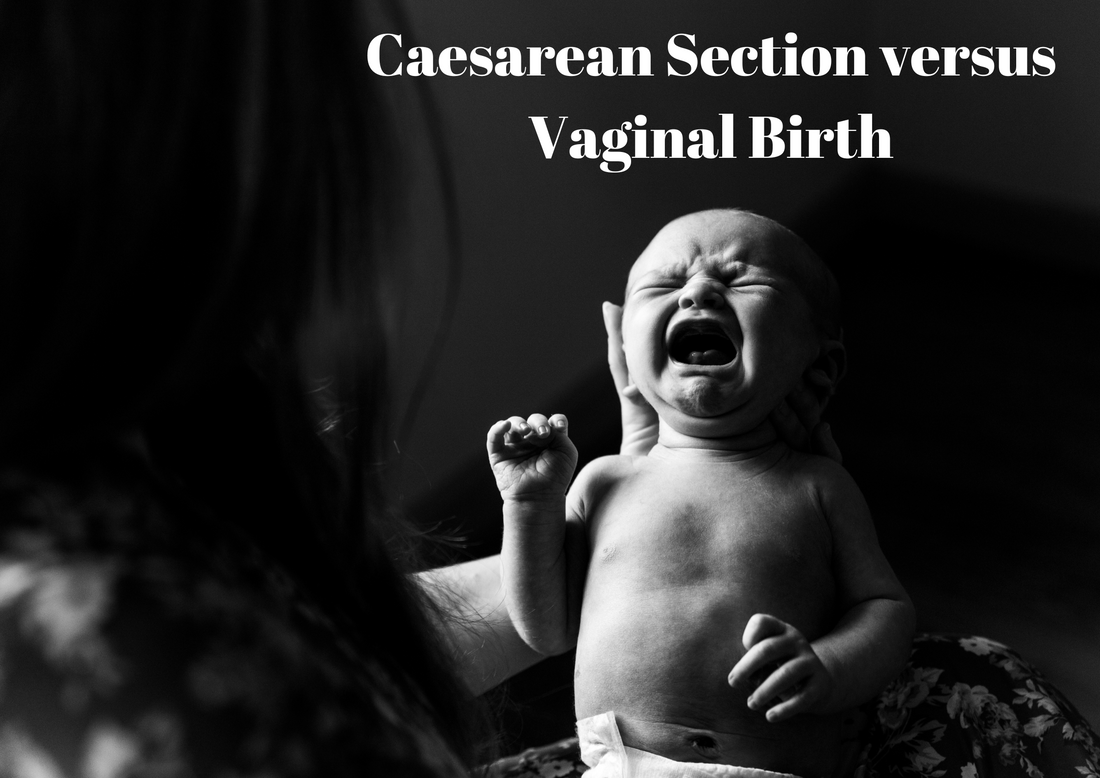If you’re a mom-to-be, you may wonder about the options for giving birth to your baby. When making this decision, you should think of your health and your medical history. This will help you and your healthcare provider to decide if you may need a caesarean section (C-section) or give birth by way of vaginal birth.
In most cases vaginal births, also known as natural births, can be safer than a caesarean birth. This however does not mean that a caesarean section is not safe. Caesarean sections are common procedures and are sometime a better and safer method of delivery for both the mother and the baby, depending on the situation.
There are many factors to consider when deciding if you should have a caesarean section or vaginal birth. Kowing the difference and benefits between these two methods is important when planning your delivery.
Key Differences of a Caesarean Section and Vaginal Birth
The key difference between a Caesarean Section and Vaginal Birth is how the baby is delivered. In a Caesarean Section the baby will be delivered through an incision in the mother’s abdomen and uterus. Whereas in a Vaginal delivery, the baby will be born through the birth canal.
|
|
Caesarean Section |
Vaginal Birth |
|
Duration of Labour |
Lasts up to 45 minutes to an hour. |
Birth can last up to 12-14 hours. |
|
Recovery Time |
Full recovery takes 6-8 weeks. Longer hospitalisation may be required. Restrictions on bending and lifting heavy items. |
Full recovery around 6 weeks or shorter. |
|
Pain Level |
Little to no pain during labour, as you will be under general anesthesia. Pain, soreness and tenderness around incision area during recovery period. |
Pain during labour as you feel every sensation. Pain can vary depending on the option of medical intervention (epidural) or not. Epidural lessens pain. |
What is an Emergency Caesarean Section?
An Emergency Caesarean happens when there is a risk to the mother or baby and can happen whether you were originally planning to have a C-section or vaginal birth. What happens during an Emergency C-section is similar to a scheduled C-section.
Vaginal Birth/Normal Delivery
Delivering a baby through the vagina is a natural delivery method. Vaginal birth is a safer and healthier option. This natural childbirth allows both mother and baby sufficient time to be physically adjusted and mentally prepared for the childbirth journey.
|
PROS |
CONS |
|
Squeeze out amniotic fluid sequestered in the baby’s lungs |
Prescheduled time for delivery is not feasible as childbirth depends on baby’s readiness |
|
Baby acquires immune-boosting bacteria while passing through the vagina |
Risk of urinary incontinence and sexual intercourse problems after childbirth due to harsh delivery |
|
Non-surgical, eliminating surgery complications |
Baby risks trauma due to shoulder dystocia or assisted labour |
|
Hospital stay, shorter |
Labour could be prolonged due to various factors such as parent being tired or the baby being in the wrong position |
|
Recovery Time shorter than C-section |
|
It is important to note that vaginal tears during labour, are possible. If you had a painful birth that created vaginal tears that require stiches, you can expect the stiches to dissolve after the first 2 weeks of recovery.
Other symptoms you may experience during the recovery period are vaginal tenderness and soreness, bleeding, discharge as your uterus sheds the thick lining it maintained during pregnancy, enlarged breasts, tiredness and more.
C-Section
C-sections are recommended for expecting patients who have high risk pregnancies, delivery of twins or when a baby is in breech position. C-sections are performed while you are awake. You usually receive an epidural or spinal block to numb the lower half of the body while remaining alert.
|
PROS |
CONS |
|
Reduced risk of urinary incontinence and sexual problems after childbirth |
Hospital stay and recovery can be longer |
|
Childbirth can be pre-planned, less stress and anxiety |
Baby may not be ready for childbirth |
|
Lifesaving option if vaginal birth is not an option or the mother and baby are in danger |
Risk of complications |
|
|
May not have a vaginal birth in following pregnancies |
You are encouraged to get up and start moving around within several hours after the surgery. Walking is important to prevent blood clots in your legs, boost circulation and helps with digestion.
Symptoms you may experience during the recovery period are bleeding, discharge as your uterus sheds the thick lining it maintained during pregnancy, enlarged breasts, tiredness and more.
What to expect during postpartum recovery
Regardless, if you’ve had a vaginal birth or c-section, postpartum recovery can be hard and stressful for everyone. Having a baby to take care of, changing hormones and your body trying to recover are all very emotionally and physical draining. Knowing what to expect can help you prepare for it all.
It is essential to know that childbirth may not go as planned, but the most important goal is that the mother and baby are safe.
- This article must not be regarded as medical advice but is merely a summary of what to expect. All medical concerns must be addressed with your medical practitioner.
